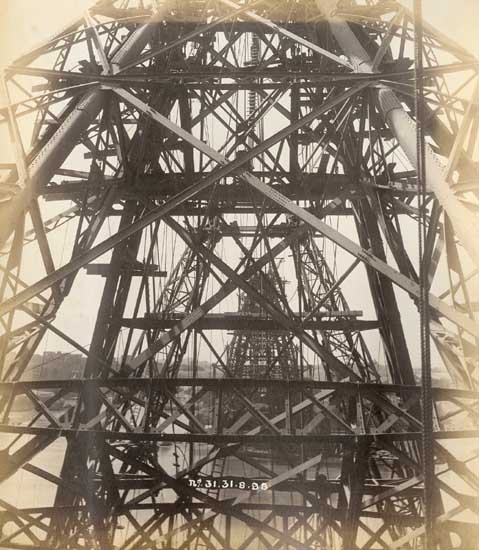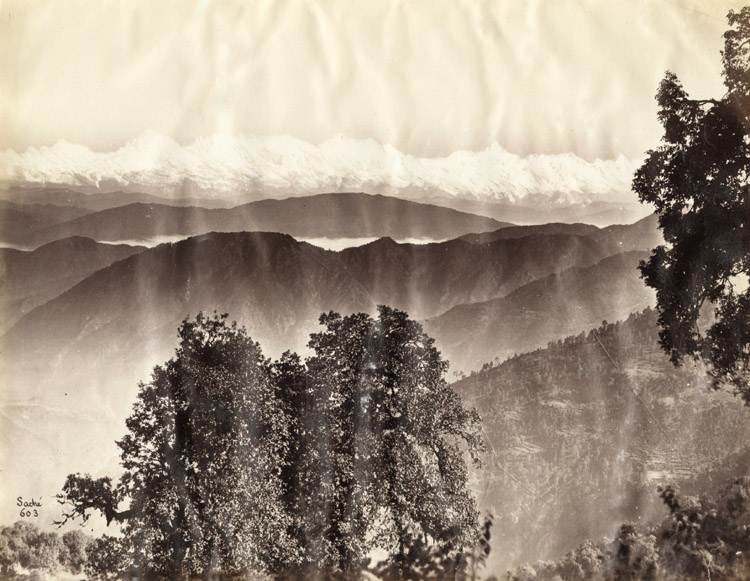
De Lagrange--Hindu Temple, Moodern a Mondlesir entre Agra
Few subjects proved as fertile for the seminal photography of the 19th century as the architectural grandeur and exotic atmospheres of the Indian subcontinent. In the mid-1850s through the 1860s, as the British raj opened India to western eyes and, indeed, exploitation, such pioneering photographers as Samuel Bourne and John Edward Sache documented the culture and structures that defined Indian daily and religious life. In doing so, they largely set the standard for the West's tourist view of India and the east, with an emphasis on the ornate Hindu temples, tombs and grand palaces--often captured in elegant mid-range and misty landscape shots--and formally posed examples of India's royalty and local color.
In this exhibition, many fascinating anonymous images are presented, affirming that a wealth of worthy if lesser known Indian photography coexists with the more celebrated. Anonymous images of Lucknow, for examples, are extraordinary in that they explore the city in the rarely photographed era prior to the devastating Mutiny (Indians call it a Revolution) of 1857, preserving for us important salt-print studies of grand structures such as Husainabad Imambada, a royal building with marble and arches said to be as worthy as the Taj Mahal. Other, more intimate images of, for example, snake-charmers and elephants connect us to the daily vitality of Indian existence with wonderful immediacy.
Then there are the great studies of temple ruins, tombs and other ornately detailed Indian sanctuaries, attributed to the cameras of such as Richard Banner Oakeley or Dr. John Murray--some of them surviving as paper calotype negatives of remarkable historic interest. And while Sache's studio is also represented with views of the Himalayan mountain ranges, this exhibit is richer in an anonymous series of superb views of the snowy Himalayas from Kashmir, with the forbidding peaks of the great range seen at a broad distance, beyond magical clouds and undulant hills.

Himalayas from Kashmir
In some cases, these ravishing anonymous landscapes may be the work of Bourne or Sache, but regardless of their authorship, they are definitive views of a world which was incredibly evocative--and new--to the exploring eyes of the Victorian age. If anything, they affirm for us how powerfully the presence of India's terrain, its people, and its monuments registered in those nascent days of photography, pushing the medium to heights of Pictorialism on one hand and historical documentation on the other. Indeed, while the Jewel in the Crown was a subjugated geography that would suffer the long night of colonialism, it was also a beacon for photography's aesthetic evolution.
Exhibited and Sold By
Contemporary Works / Vintage Works, Ltd.
258 Inverness Circle
Chalfont, Pennsylvania 18914 USA
Contact Alex Novak and Marthe Smith
Email info@vintageworks.net
Phone +1-215-518-6962
Call for an Appointment













Share This